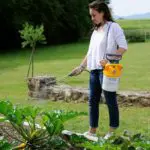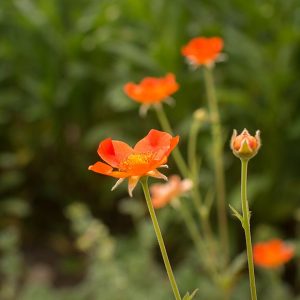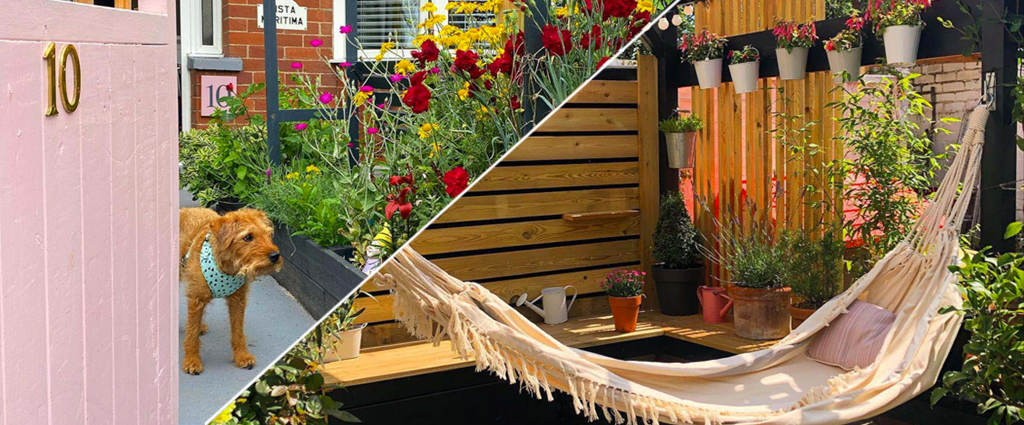Want to learn how to protect your garden from a flood? We show you how you can prepare your garden for a flood, as well as how best to restore your garden after one. Floods cause significant damage to gardens, making it incredibly challenging to save. We hope our tips help in protecting and restoring your garden from heavy rain, floods and waterlogging.
How to prepare and protect your garden?
1. Use weather warnings
Weather warnings allow you to follow weather events that may result in flooding impacts for people and property. If you are concerned about flooding in your area, simply visit the GOV Flood Alerts and Warnings website. This is certainly one of the best ways to protect your garden from a flood.
The Environment Agency (EA), Natural Resources Wales (NRW) and Scottish Environment Protection Agency (SEPA) constantly monitor rainfall, river levels and sea conditions to forecast the possibility of flooding.
There are three types of warnings issued when flooding is forecast. These warnings are: flood alerts, flood warnings and severe flood warnings.

2. Improve the soil in your garden
The soil in your garden can be improved, helping to reduce the effects of flooding in your garden. Start off by introducing organic matter within your garden, this can consist of homemade or store-bought compost, manure, sawdust and leaves. This will help to improve the structure of your soil.
Look at the level of your garden, and see how high or low your plants are situated. Planting on raised mounds (a cheaper alternative to raised beds), can reduce the effects of waterlogging. When planting, try adding sand or grit, as this can help with drainage.
Try not to walk on your garden or soil after flooding or heavy rain. Walking on your garden after rain will compact the soil so much, that drainage will be limited.
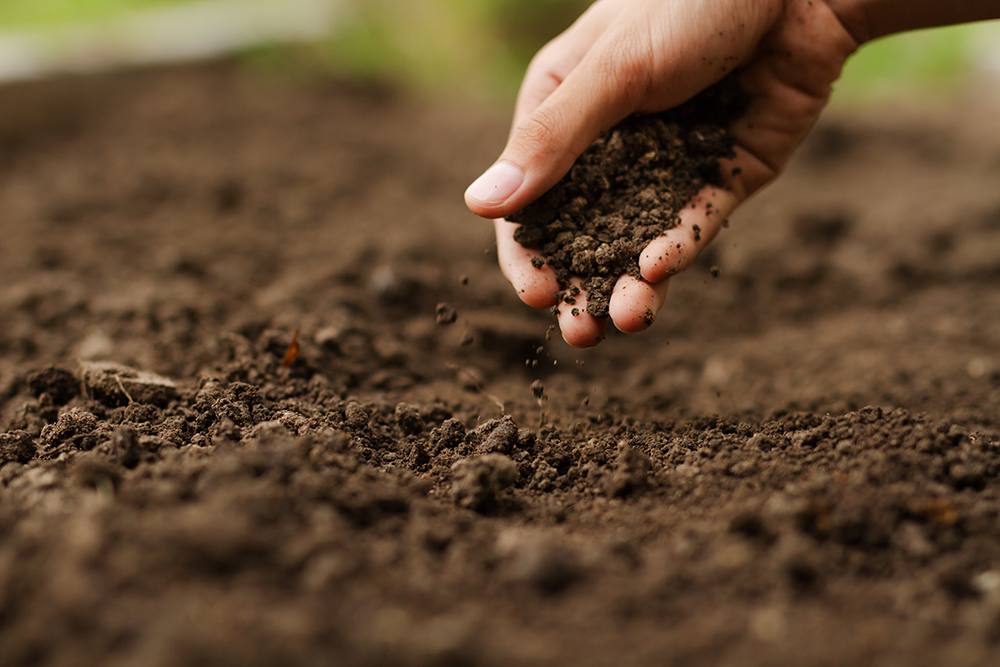
3. Plant well
Planting well reduces the impact of a flood by breaking up the soil in your garden, improving its structure and therefore its drainage. This way, water is more likely to be absorbed into the ground, rather than staying on the surface, helping to protect your garden from a flood.
One of the most effective methods is to plant trees and shrubs, they have deep roots meaning that the soil below the surface level has ample drainage. If there are areas in your garden that are prone to flooding, try raising the ground level with the soil, start planting and create a protective mound around the base of your trees/shrubs. If you would prefer to place different plants in your garden, take a look at our list of plants that reduce the effect of flooding.
4. Build raised garden beds
Raised beds can help protect your garden from a flood as well as waterlogging. By raising your plants off the ground, any excess amount of water will not come into direct contact with your plants, due to the improved drainage and surrounding material.
Raised beds made out of the correct materials can last years, helping your garden survive any future floods that may be heading its way.
You can construct raised beds out of concrete blocks, slabs, treated wood, decking timber or raised bed kits. Use our Find a Store, to help you source these materials.
5. Water butts and gutters
Use a water butt to harvest rainwater, this can be helpful during heavy rainfall as it reduces the amount of water being absorbed by your garden. There are various sizes of water butts, ranging from 100L to 1000L. The larger the water butt, the more effective it will be for your garden.
Water butts can also be connected to the guttering on your home and/or outbuildings. By connecting your water butt to a larger surface area, more water can be collected. This water can then be used during warmer temperatures. Use a water butt pump and micro irrigation to help distribute the water across your garden, which will also help to protect your garden from a flood.
On the topic of gutters, make sure to check yours for any build-up of leaves, branches and other debris. Gutters need to be clear in order to work effectively, otherwise, your gutter will overflow with water and spill into your garden, and not down the drain.

6. Create a green roof
It may sound bizarre, but creating a green roof on sheds, outbuildings and bin stores can be a great help to protect your garden from a flood and waterlogging. Not only this, but green roofs are beneficial for inspects and pollinators, it is often their “safe haven”.
These green roofs consist of a waterproof membrane, a pressure-treated timber base & frame, as well as a lightweight specialist compost. You are then free to plant whatever you so like, however, make sure that the roof you are planning to convert is strong enough to withstand such weight.
7. Dig a soakaway
Soakaway’s are one of the most effective methods that can protect your garden from a flood. Soakaway’s need to be deep (at least 1m³), then filled with hardcore, subbase, stones, rubble and/or bricks. Use a variety of sizes to help with the drainage, then place the top soil back over.
Another method of dispersing water is to incorporate a bog or pond within your garden, you can then lead your soak-away or trenches down to this area. Normally, this will be located at the bottom of your garden, away from your house.
If you have problems with flooding and waterlogging, limit the amount of concrete or patio slabs in your garden, as these will reduce the quality of drainage your garden can offer. If you notice any problem areas in your garden, try raising the ground level to create beds/borders which will help with drainage.
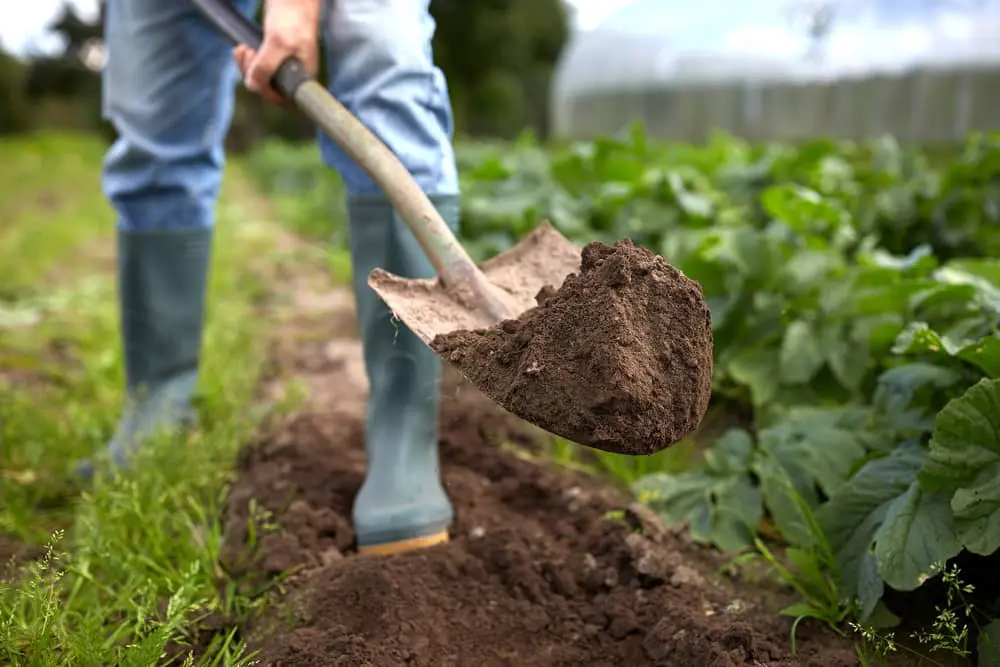
8. Improve your Lawn
Take a look at the soil underneath your lawn, and observe its quality and structure. Soils that are more compact are likely to be prone to flooding, however there are methods that help tackle flood-prone lawns, preferably undertaken in early autumn.
Start by raking through your lawn to clear it of any leaves and debris. Next, use a garden fork to spike your lawn, this opens up the soil beneath the grass and allows for air and water to seep in. Then use a fast-germinating lawn seed to help rejuvenate these areas. This method is most effective in more compact lawns, as it can help loosen up the soil beneath, helping to protect your garden from a flood. You can also use an autumn lawn care seed, which will improve the root structure in the soil, creating better drainage and a more durable garden.

9. Check your potted plants
As potted plants are normally placed at ground level, they can be the first to feel the effects of waterlogging. Start by removing the saucer from underneath the pot, tip the pot on its side and remove any material obstructing the drainage holes. It is important that these are kept clear, to prevent any damage from waterlogging. Place the pot and saucer onto a surface higher than ground level, this will significantly improve the plant’s water drainage.
10. Overflowing drains
It can be a common occurrence for drains to become blocked, especially with flash-flooding. This is where the level of rain is so great, that the drainage system is unable to cope with the levels of water. If you believe you have a drain blockage, or they are overflowing, contact your water company who may be able to find the source of this problem. This will help in protecting your garden from unnecessary waterlogging, and protect it from a flood.
Waterlogging and Flooding
What is Waterlogging and Flooding?
Waterlogging is when water cannot drain away, this has a negative effect in the garden as plant roots drown from the overconsumption of water. Waterlogging is common on soil that has poor drainage, where water cannot disperse around the garden.
It’s not just the water that kills plants, but the water also limits the oxygen supply to the roots, meaning that carbon dioxide cannot escape. Waterlogging is most harmful during the summer months, as plants are in need of more oxygen.

What are the symptoms of waterlogging?
Waterlogging symptoms can be difficult to find, however, they are normally most noticeable on the leaves of a plant. This would include yellowing or dark areas on the leaves, or where evergreens turn brown. As the plants are starved of oxygen due to the surplus of water, the plant may also look like it is starving due to the limited oxygen to the roots. Such roots may turn black and emit a foul smell, you can look for this by taking a root sample.

Protect your garden from flooding with plants!
Can plants prevent flooding?
Plants certainly can have both a negative and positive impact on the effect of flooding in your garden. Choosing plants that soak up lots of water, will be greatly beneficial in protecting your garden from waterlogging. Plants can reduce the negative impacts of rain, helping you to keep your garden flourishing. By incorporating some of the methods above, as well as selecting the right plants, your garden will have a better chance to protect your garden from a flood.
How to choose moisture absorbent plants?
It’s important to grow the correct plants for specific areas in your garden. Some plants are much more prone to waterlogging than others, there are plants out there that will survive much longer in large volumes of water, some relishing the moist soil that the water brings. We have pulled together a selection of plants that you can implement within your garden, to protect your garden from a flood. Have a think about your space and the soil in which the plant will sit, before choosing your plants.
Top 10 best plants for absorbing water:
What to do after a flood?
Be patient with your garden
After the rain has stopped, it can be tempting to take action to start work on your garden. However, it’s important not to create any further problems and/or damage to your garden.
Try and keep off the grass and soil, especially in the areas that have felt the full extent of the rain. It’s best to either wait until your garden has dried out, or use a Flood Pump, which will move water from one area to another. Flood pumps help significantly to protect your garden from a flood. Once your grass/soil is dry, you can walk on it, however try and stick to paths and drier areas in the meantime. You want to make sure that the structure and integrity of your soil is not impacted by walking on it.
It’s best to avoid digging up the garden, as this will make the problem worse. The only exceptions being plants that you want to keep and rejuvenate. This should only be done for plants that are difficult to replace, or are in easy-to-reach areas. Otherwise, the surrounding plants and soil will feel the impact of this through the compacted soil.
Once everything has dried up, you can spend some time looking after your plants. Keep them in the shade if possible, as the roots are unable to take on any more water to keep them hydrated. Make sure to give your plants a gentle water as soon as the soil is dry. If you allow the soil to dry up too much, you will be taking the plants from one extreme to another, which is even worse for the plant. You should see improvements within a week, if you don’t, then other measures may need to be taken.
How to restore a garden after a flood?
As soon as your garden has dried, it’s time to restore your green space. Put on your gardening clothes, as well as boots and protective gloves as the water won’t be as clean. Collect all of the debris from your garden, and dispose of it correctly. If you find any contaminants on hard surfaces, make sure to wash down these areas. Also, your unharvested fruit and vegetables may need to be thrown away. If flood water has reached the fruit and veg itself, or the roots, it’s likely that they will be contaminated. Likewise, with your herb garden, it is best to avoid consuming such herbs until a year or so later.
If your lawn has not drained well, you can use a fork to help. Place the fork in the lawn/soil, and continue to add sand or grit into these holes as this will help with drainage, both now and in the future. Take care in keeping the holes small and precise.
Restoring your garden after a flood will be a lengthy process. Take photographs of the flood, so you can remember how and where the water dispersed and collected. This will help in restoring and protect your garden from a flood in the future.








